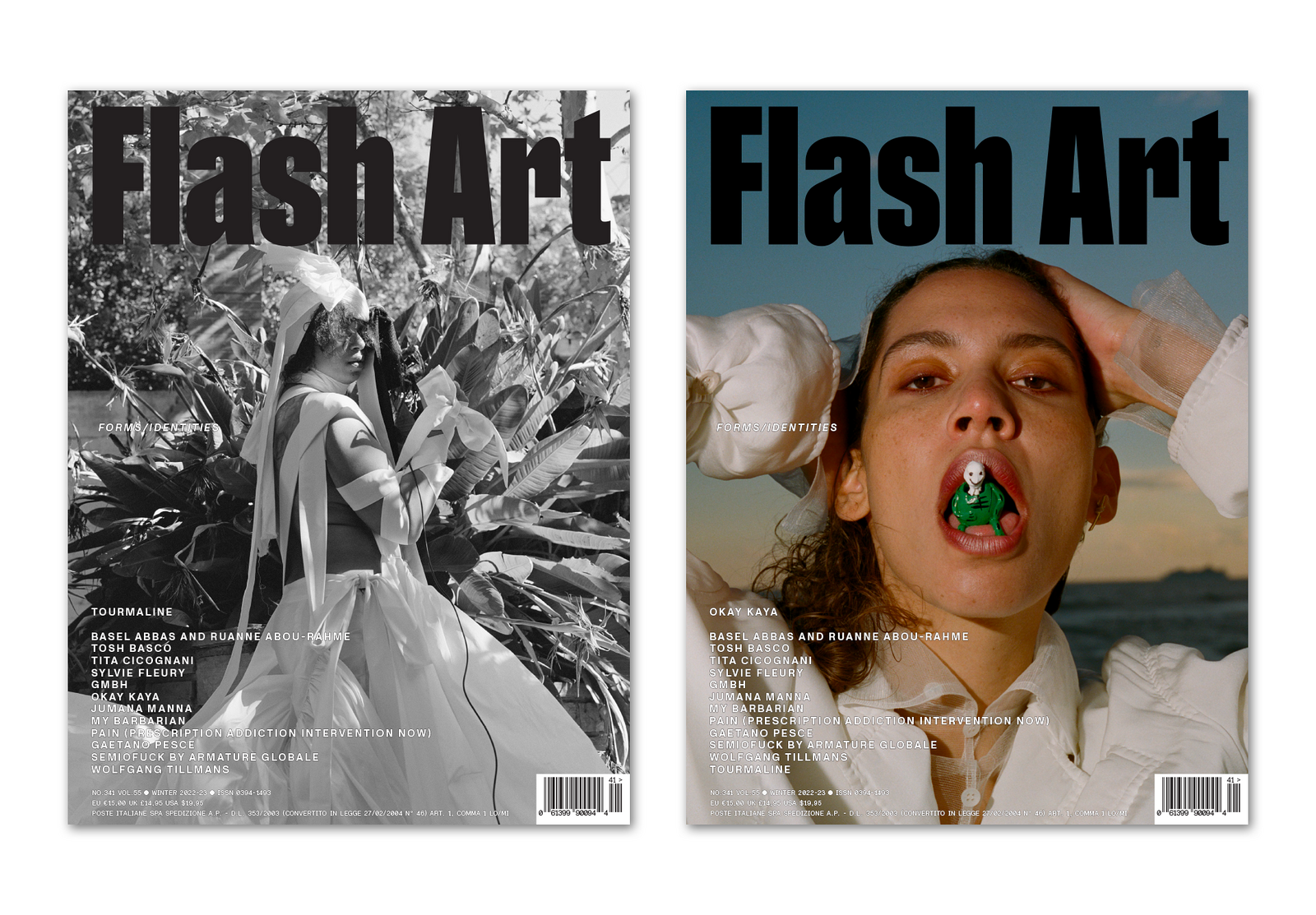Is it identity that determines form or form that somehow constitutes the identity of an artistic practice? While analyzing some notable visual practices — each inescapably linked to an artist’s personality and the ways in which they experience society — we reflected on this question. In this winter issue, titled FORMS/IDENTITIES, we delve into these two concepts that inform one another like complementary colors.
Octavia Bürgel, in her text on Tourmaline, one of the issue’s cover stories, considers the words of Diane Arbus, who once wondered “what it is to become whoever we may be.” Unlike Arbus’s subjects, who in a sense cease to exist beyond their limited picture plane, Tourmaline’s presence in her videos and photographs becomes part of a shared real-world narrative, a part of the legacy of Black history that she questions by “taking an approach that renders herself indivisible from ancestors in the fight for transgender liberation.” Spanning performance, works on paper, and photography, Tosh Basco’s practice, as Matthew McLean points out, “finds forms for the inexpressible, in order to explore what happens outside languages and in between them.” Whether they employ movement, lip-synching, mark-making, or the photographic image, her embodied works are like portals to a fleeting moment in time. Stories of transdisciplinary identities intermingle in this issue. One of them is the preternaturally gifted artist, musician, model, and actress Kaya Wilkins — known in the creative industry as Okay Kaya, the other cover story of this issue. Among other things, she discusses with Isabelia Herrera her visceral connection to water, a motif that finds expression in multiple forms, including her latest album, SAP (2022), released last November. Returning to photography, Olamiju Fajemisin offers us a fresh and timely analysis of Wolfgang Tillmans, arguing how “his recurrent point of departure is the single image — an image that is self-sufficient and attempts to challenge its condition of singularity as a standalone work.”
Also in this issue Franklin Melendez points out how Tita Cicognani’s work turns on an underlying truth: the numerous ways we devise to demean ourselves in the pursuit of an other — be it an object of lust, romantic affection, or holy fervor; the duo Basel Abbas and Ruanne Abou-Rahme present a visual project, accompanied by the words of Noam Segal, that simulates the cross-disciplinarity of their practice within a two-dimensional plane; Shumon Basar reflects on the end of the end of history, or what he calls “endcore,” among other micro-cultural trends on the internet; Jumana Manna by Jane Ursula Harris; GmbH by Charlie Robin Jones; Letter from the City by PAIN; Jazmina Figueroa’s conversation with the collective My Barbarian about how their nightclub act turned into a conceptualized genre called “showcore”; and the second episode of “SEMIOFUCK,” conceived by Armature Globale, which celebrates the practice of rapid erasure to compute scarcely accountable critical statements.
Also in this issue: a special project conceived by Sylvie Fleury and shared by Gucci; and a conversation between Gaetano Pesce and Hans Ulrich Obrist on the genesis of his Come Stai? chairs for Bottega Veneta as well as some of his other notable works both realized and unrealized. On the occasion of Art Basel Miami Beach Gaetano Pesce designed a special cover exclusively for Flash Art and Bottega Veneta.
Reviews
New York: 1962–1964 The Jewish Museum, New York / Sissel Tolaas RE_________ ICA, Philadelphia / Carolee Schneemann Body Politics Barbican Center, London / Cyprien Gaillard HUMPTY \ DUMPTY Lafayette Anticipations and Palais de Tokyo, Paris / Renée Green Inevitable Distances Migros Museum für Gegenwartkunst, Zurich / cameron clayborn nothing left to be Hamburger Bahnhof – Museum für Gegenwart, Berlin / Anne Imhof YOUTH Stedelijk Museum, Amsterdam
The issue will be available at Art Basel Miami.


